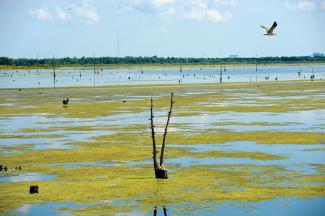As we well know in Louisiana, sea-level rise is one of the world’s most critical climate concerns. It is an incredibly complex issue, involving the interplay between the earth, the oceans, the cryosphere, the human race and all other living species. No single scientific discipline can encompass the study of all of the factors at play: studying sea-level rise is inherently interdisciplinary.
Tulane is a leader in breaking down barriers between disciplines and creating collaborations. It’s what helps us attract faculty like Sönke Dangendorf, who joined Tulane in 2021 as the David and Jane Flowerree Assistant Professor in the Department of River-Coastal Science and Engineering.































































